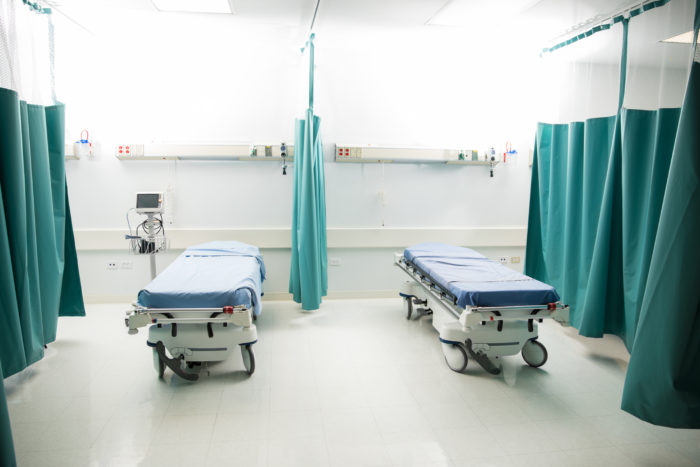The Hospital Bed Shortfall
April 23, 2020
Across the globe, patients infected with the novel coronavirus are arriving at their local hospitals for medical care. Will a hospital bed be available to them?

Available hospital beds, or lack thereof, has become a critical factor in nations’ responses to the COVID-19 pandemic. As of March, nearly two-thirds of the roughly 728,000 hospital beds in the United States were already occupied. Most states are projected to run out of hospital beds by May.
Availability varies from community to community, with marked differences between rural and urban areas. That means that available beds may not necessarily be available where they are most needed. States and communities with older populations in particular feel the strain.
Communities are being resourceful. In New York City, a Navy hospital ship docked in the harbor now provides another 2,500 beds for sick patients. Los Angeles has similar support from the USNS Mercy. Seattle is transforming a local soccer field into a temporary hospital, while Miami is repurposing its local fairgrounds. Across the country, policymakers are looking to reappropriate community buildings, conference centers and even college dormitories into makeshift hospitals. But experts still project shortfalls.
The situation invites a closer look at how cost-cutting policies may have handicapped the health care system over time. The lack of surge capacity, a hospital’s ability to absorb a sudden influx of patients, has declined in recent years. And cost efficiency has been an important driver.
As explained by Bloomberg news, Medicare reimbursement policy has shifted over time to encourage hospitals to limit inpatient stays. Reimbursement policy also has driven more care to outpatient clinics. Over time, these trends have prompted hospitals to cut capacity to limit costs, reducing the number of hospital beds per capita.
At the same time, patients have seen growing barriers to care for chronic diseases. Insurers’ attempts to reduce expenses and boost profits has led to non-medical switching for asthma patients. To high insurance rejection rates for medication that protects at-risk patients from heart attack and stroke. To prohibitively high cost-sharing that undermines people with diabetes’ ability to manage their disease. And to prescriber restrictions that limit migraine patients’ from preventing attacks that could very well land them in the ER. These barriers to care can all result in otherwise preventable hospitalizations.
In other words, policies have made it more difficult for patients and health care providers to manage chronic diseases, at the same time that hospitals have become less able to accommodate these patients should they need emergency care. With COVID-19 now peaking in some cities, the dangerous combination of short-sighted cost cutting and one-size-fits-all policies is moving from the back burner to the forefront of public consciousness.
The situation offers an opportunity for policymakers at all levels of government and health care. In addition to fighting the coronavirus, leaders can commit to policy change that positions the health care system to better handle the next crisis – and to better serve all patients moving forward.
Categorized in: Blog

